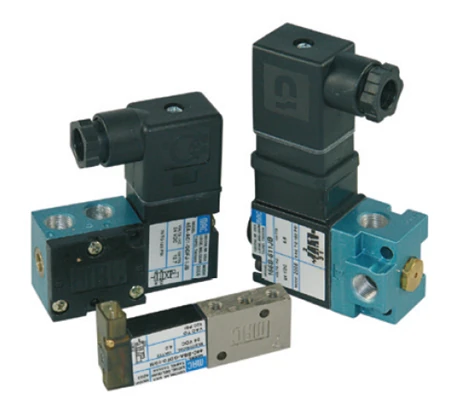How does a solenoid valve work?
Solenoid valves convert electrical energy into mechanical energy.
They consist of the valve body and a magnetic coil. The magnetic coil on the top actuates the valve by having an electric current flow through it. This creates an electromagnetic field that, in turn, sets the tappet in motion.
They can convert the electric signal from a control mechanism, and release, block or vent compressed air.

The solenoid valves are available in different wattage versions, as well as in structural modifications.
According to the type of module
- air-opening / spring-closing or
- air-opening / air-closing
the solenoid valve must be selected.
A 3/2-way solenoid valve is sufficient for the first type (air-opening / spring-closing).
For the second type (air-opening / air-closing), a 4/2 or 5/2-way valve must be used. Usually 24 V or 230 V solenoid valves are used.
Tip: The greater the electrical output of the solenoid valves, the faster they switch. This means that even the smallest dots of hot-melt adhesive can be applied.
